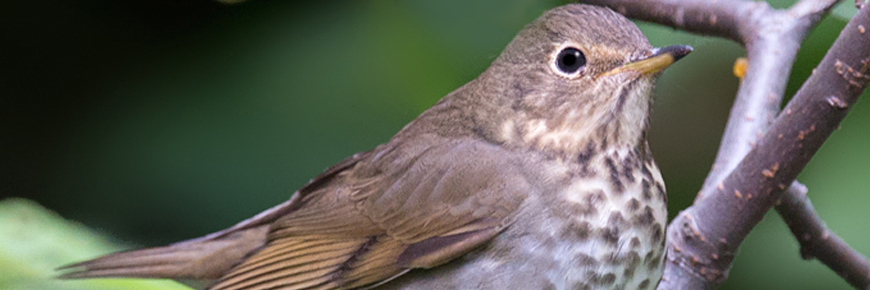
Bicknell's thrush
Cape Breton Highlands National Park
The Bicknell's thrush prefers dense softwood forest for its breeding habitat. Its nests are made mostly of moss and found in low bushes or on the ground. It needs thick forest with ample canopy cover to protect nests. It has a social structure unlike other North American songbirds because the males and females may not form traditional pair bonds and males may help at the nests. Also, the brooding of their young is more frequent and intense than many songbirds. More about these birds needs to be learned in order to develop sufficient survey methods.
Distribution
The Bicknell's thrush breeds in a few locations in eastern Canada (Québec, New Brunswick and Nova Scotia). They are listed as a species of special concern by COSEWIC and there are estimated to be 5,000 - 15,000 pairs.
Threats
- limited habitat
- small numbers (5,000 - 15,000 pairs)
- isolated pockets
- nesting success low
- low reproductive potential
Research
Cape Breton Highlands National Park has been conducting research on this bird since 2002. Studies have shown that it exists in low numbers and is not uniformly distributed in suitable habitat. It appears to be found in non-forested areas such as bogs, barrens and low, windswept vegetation of black spruce and balsam fir.
Related Links
Related links
- Date modified :